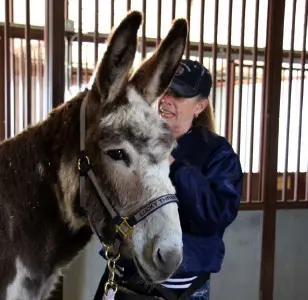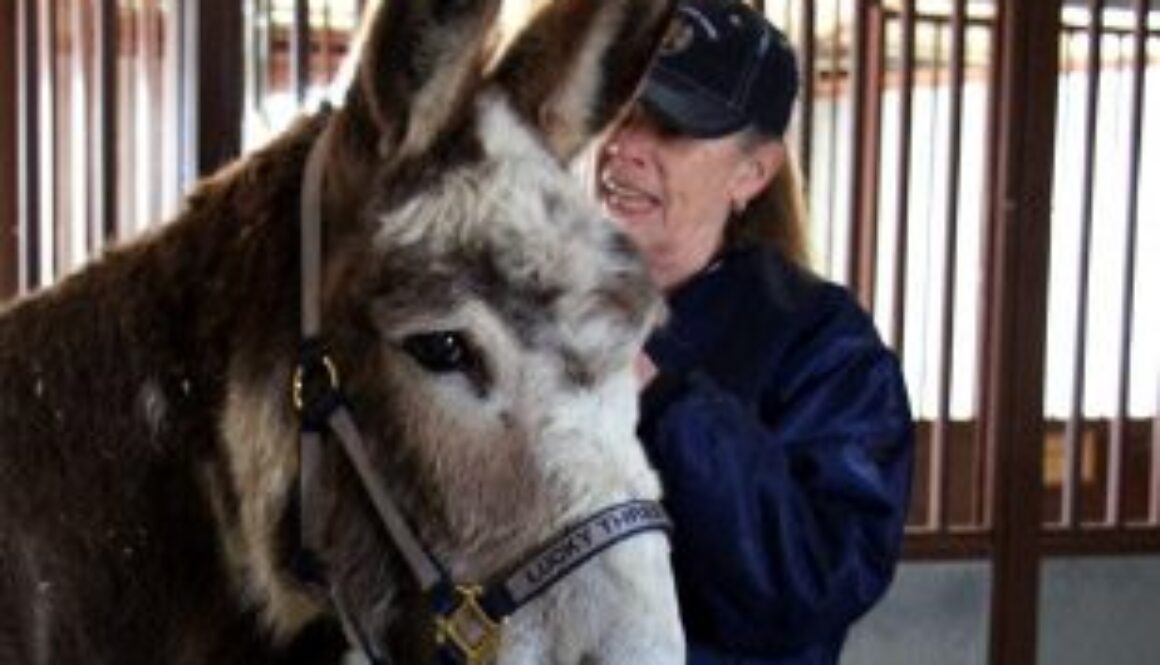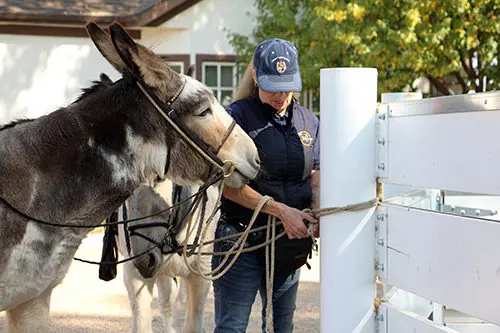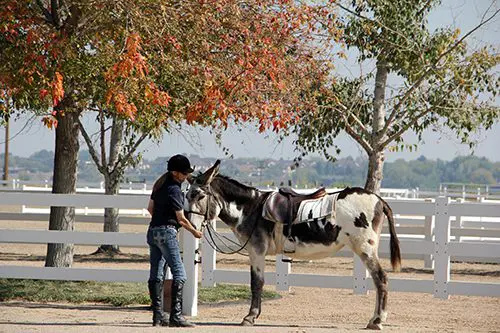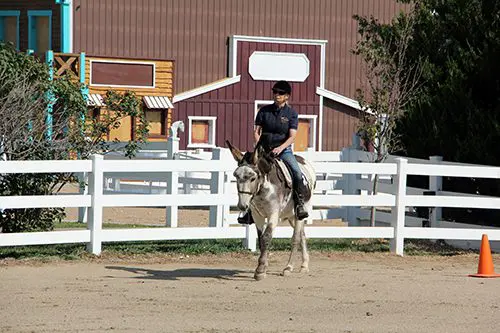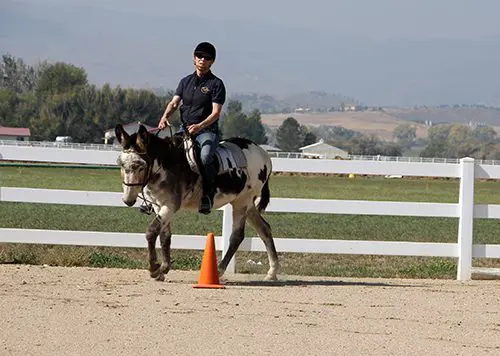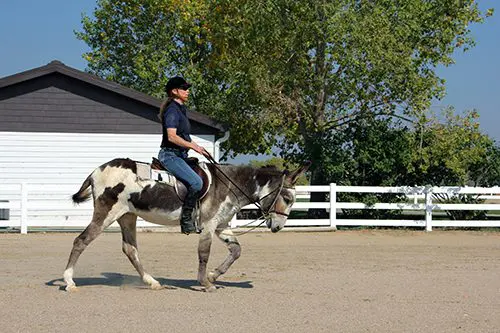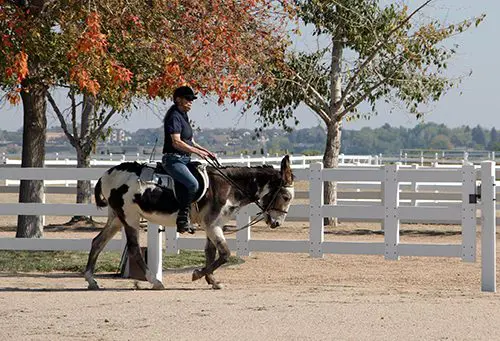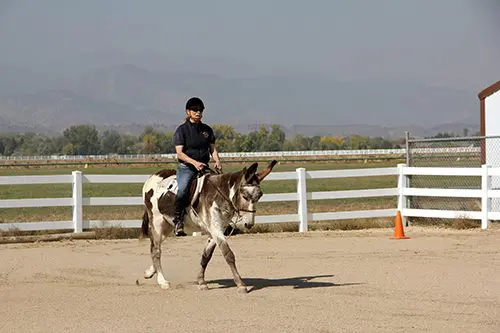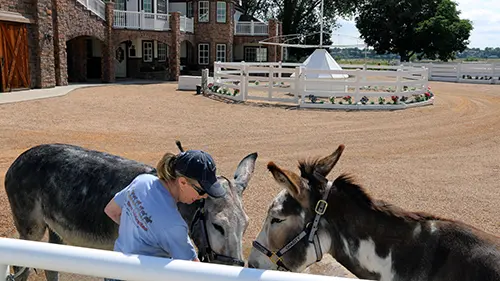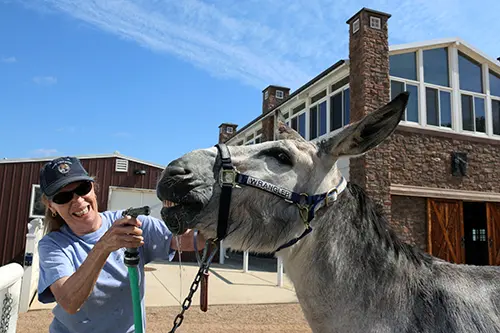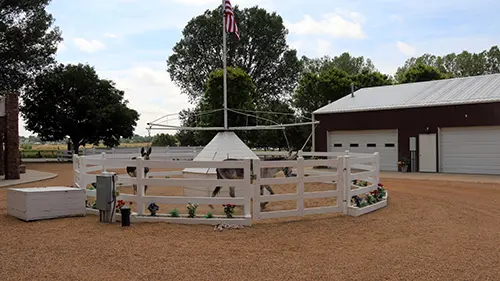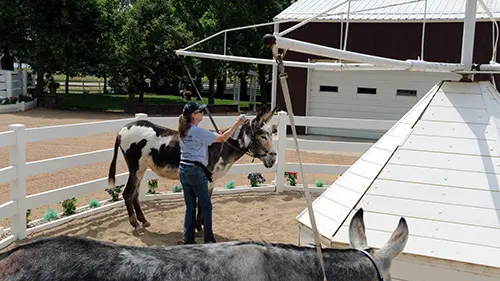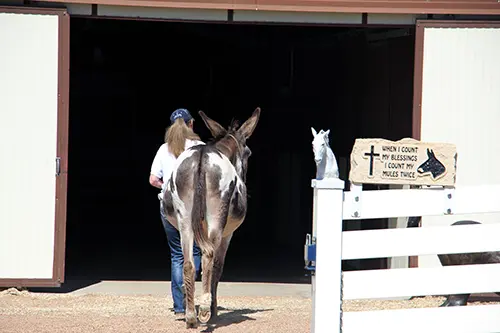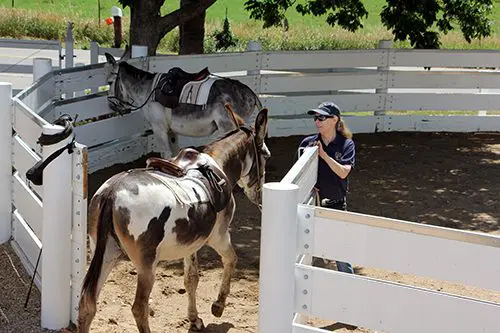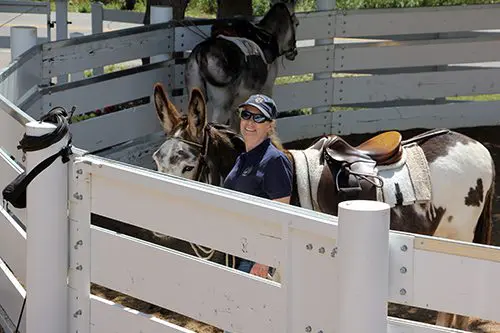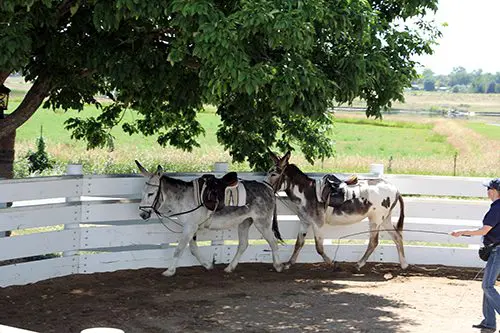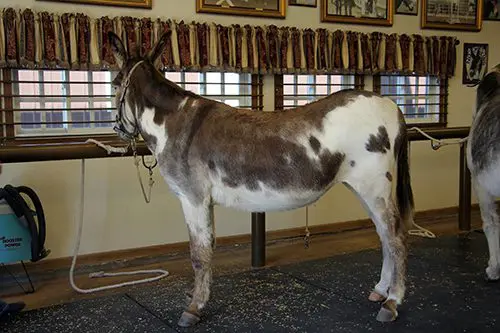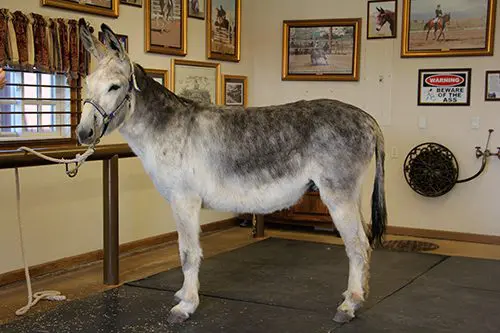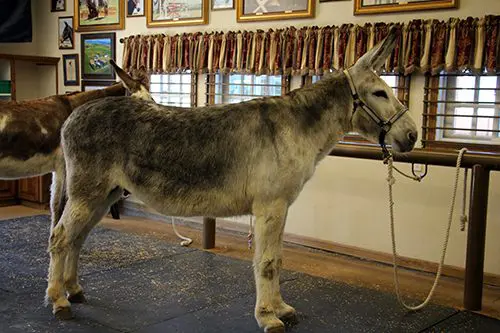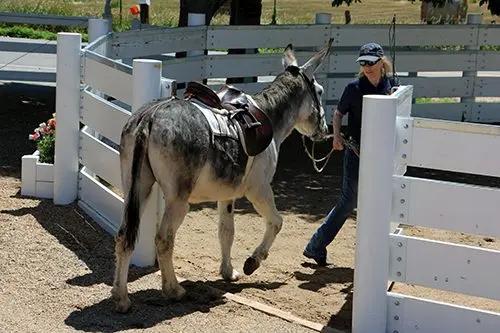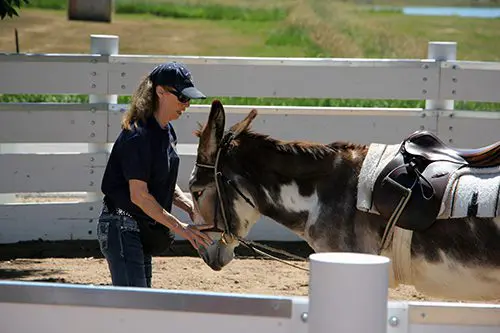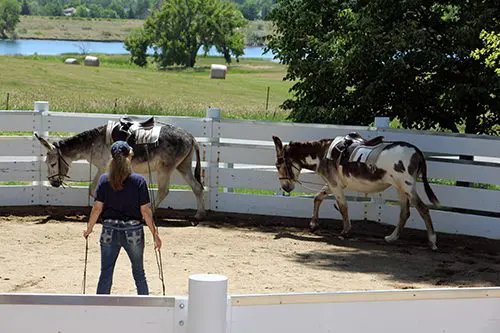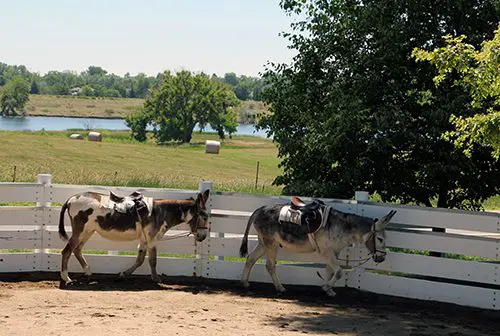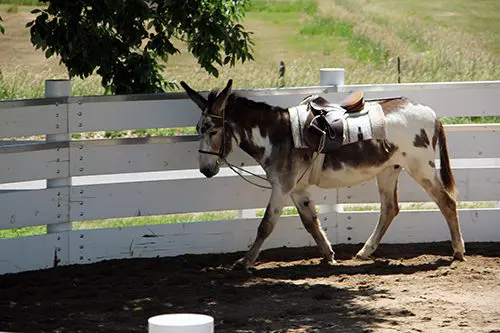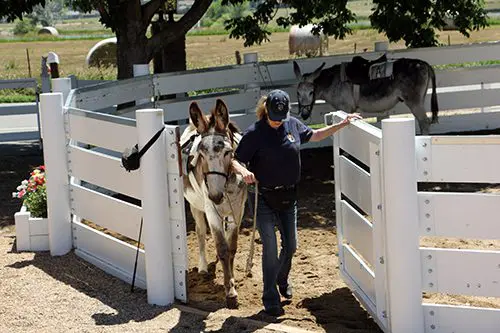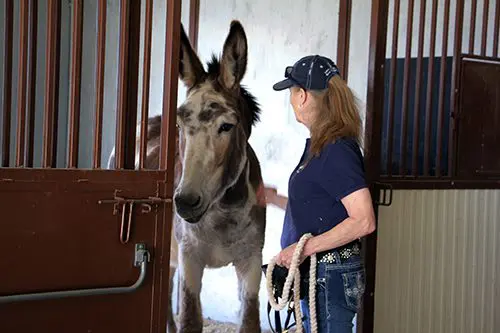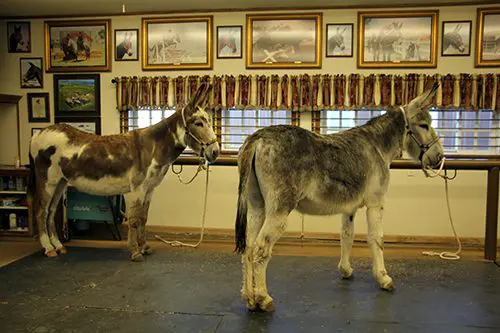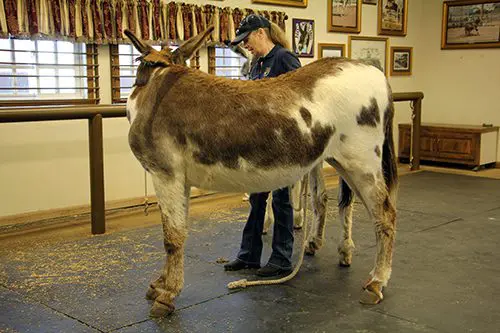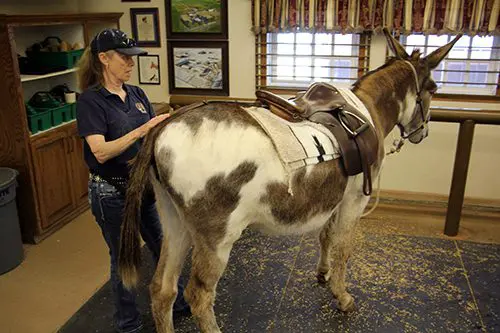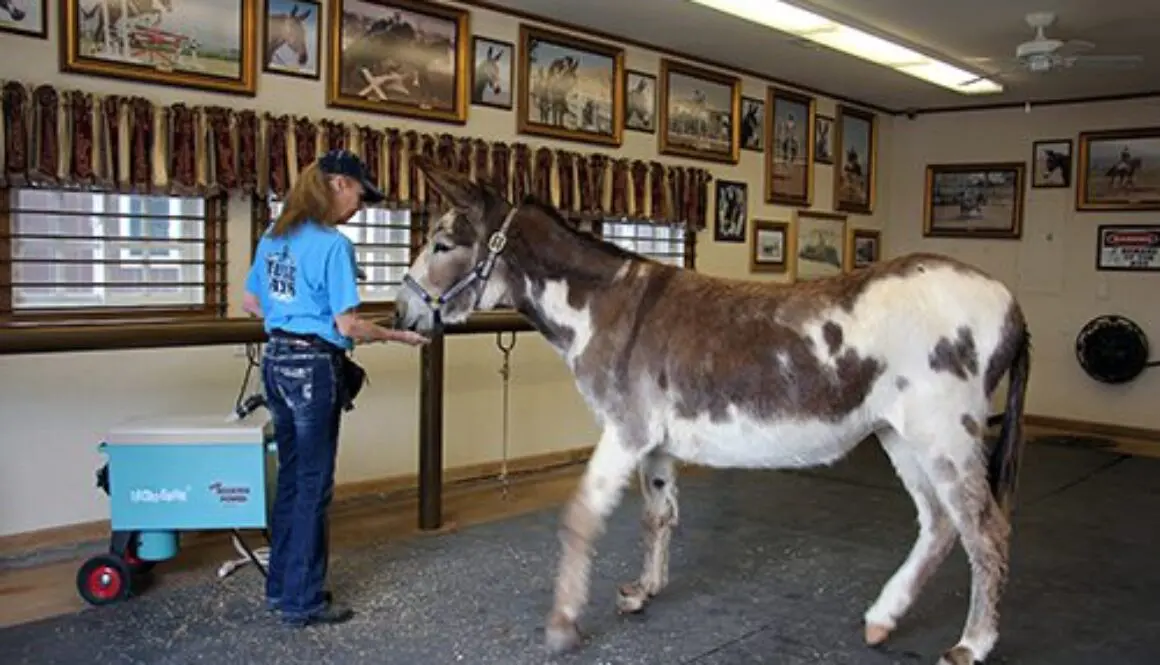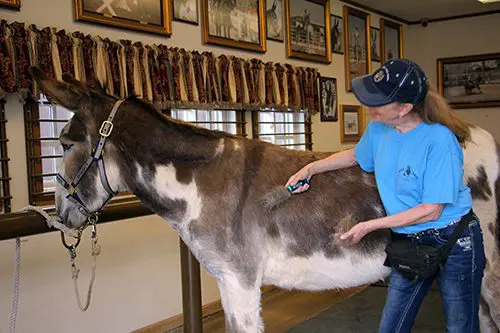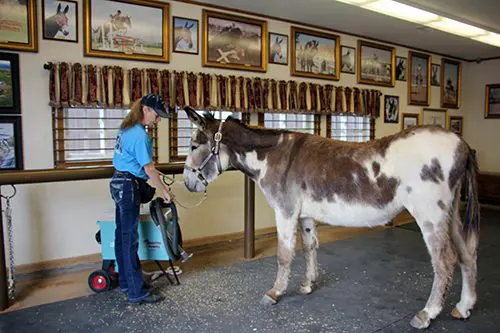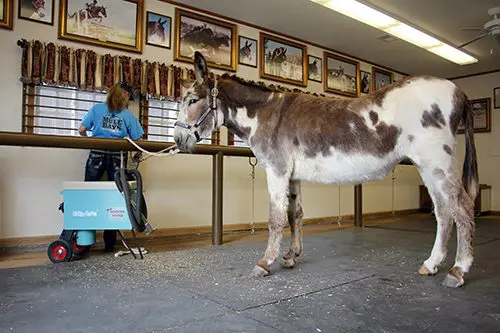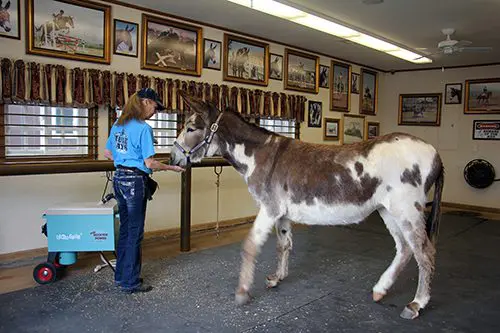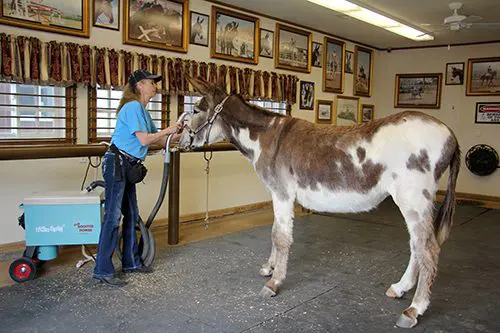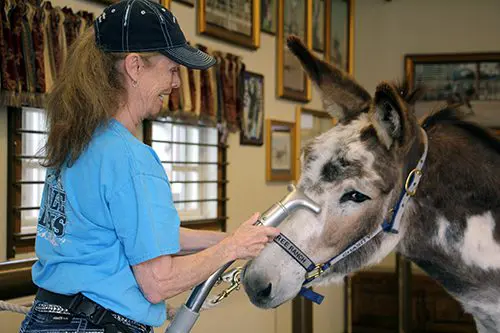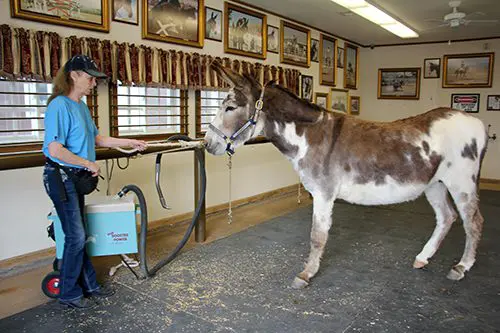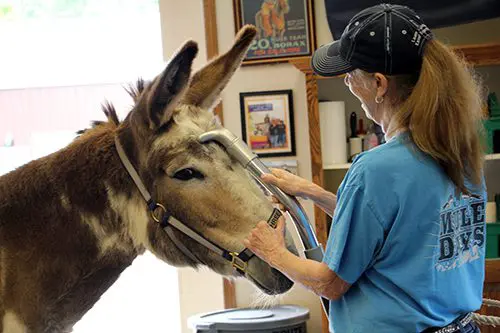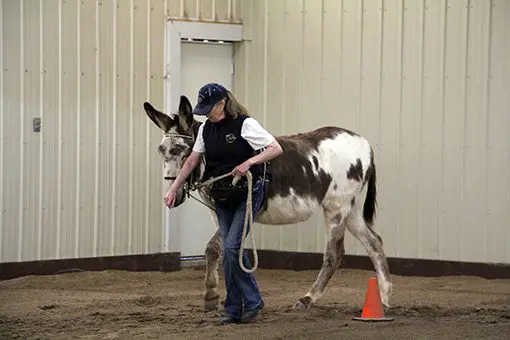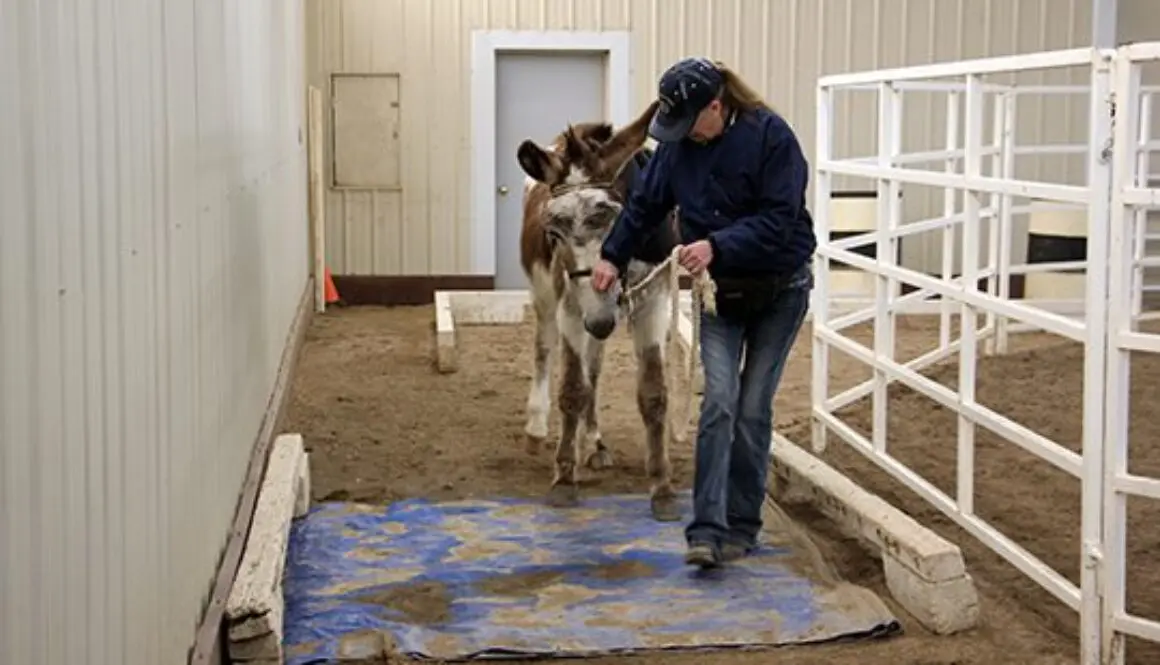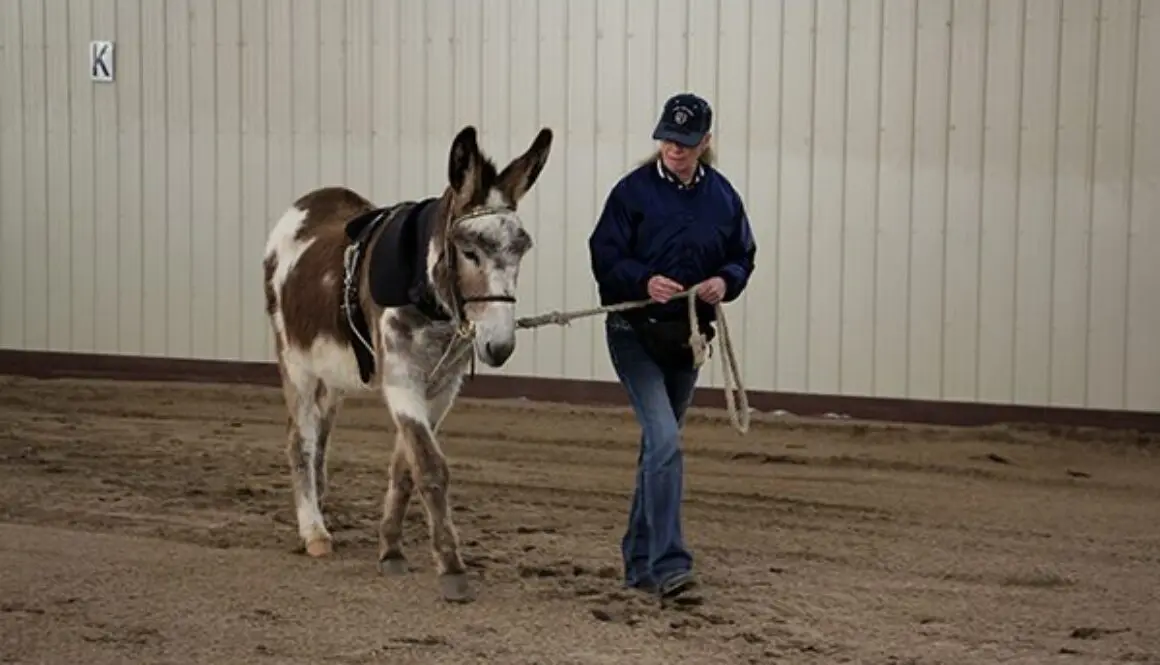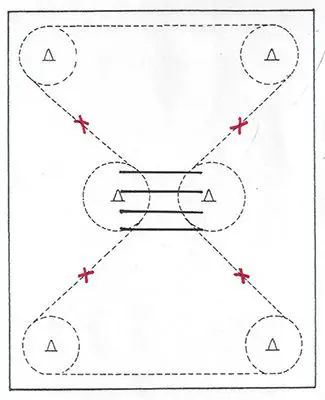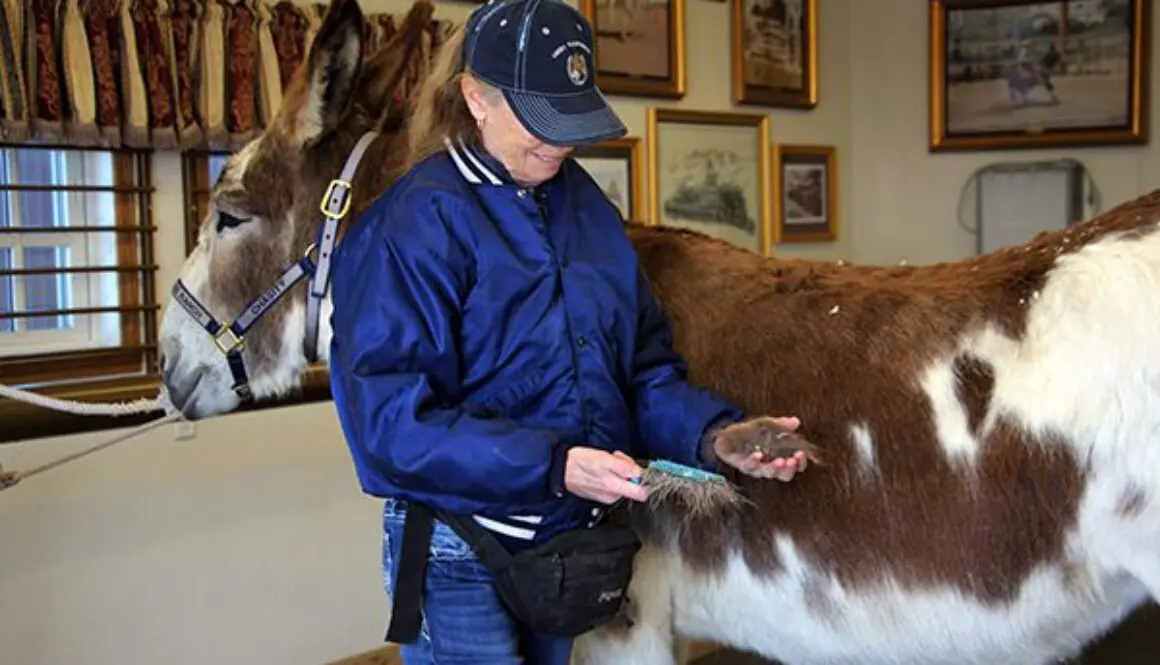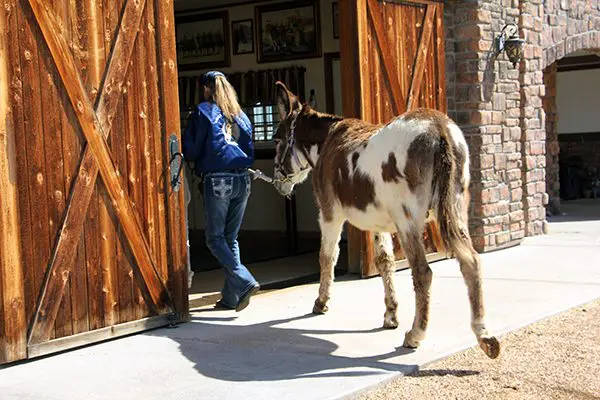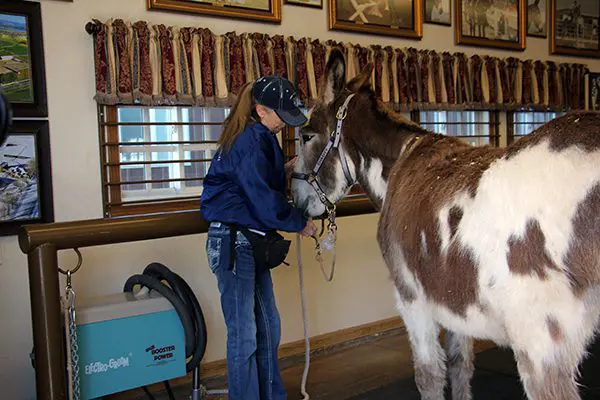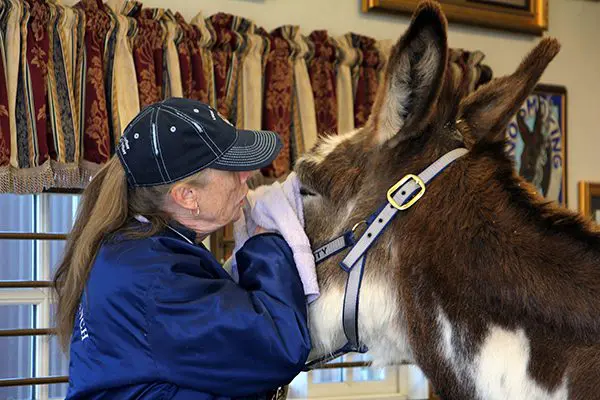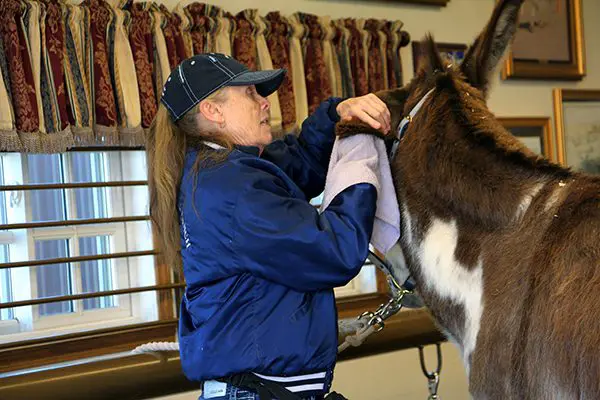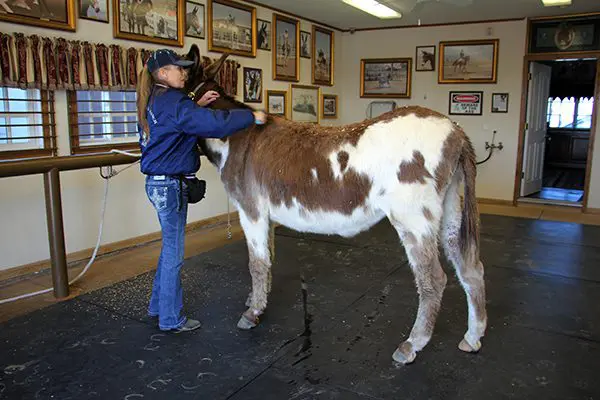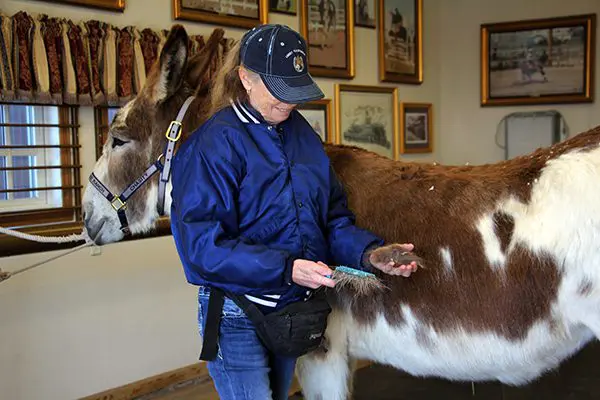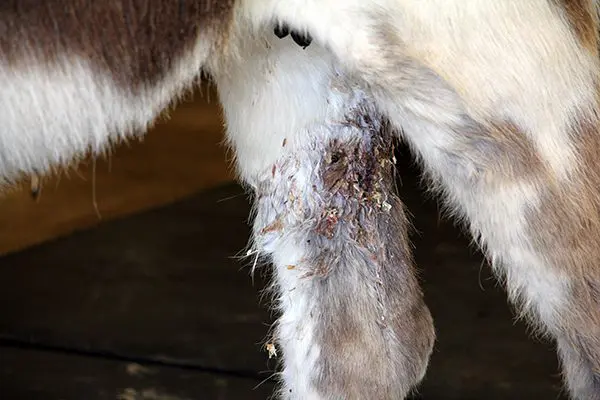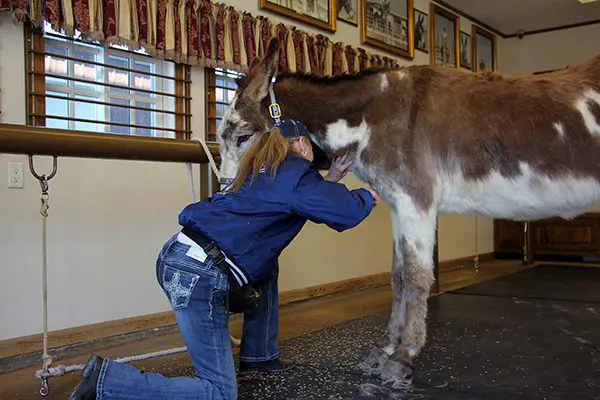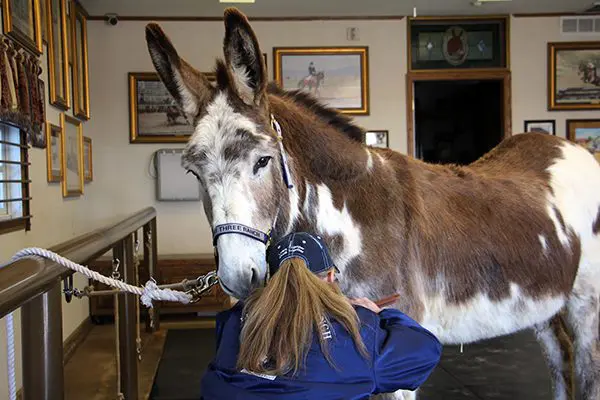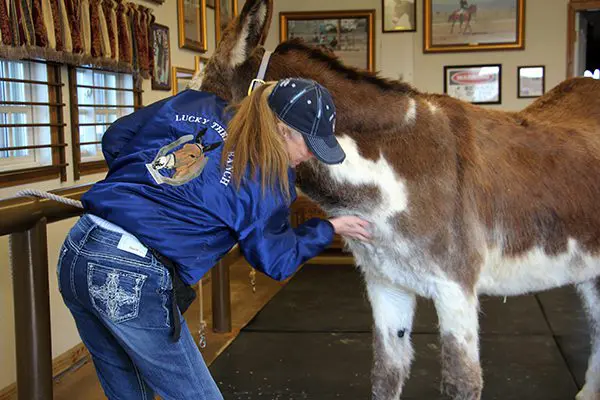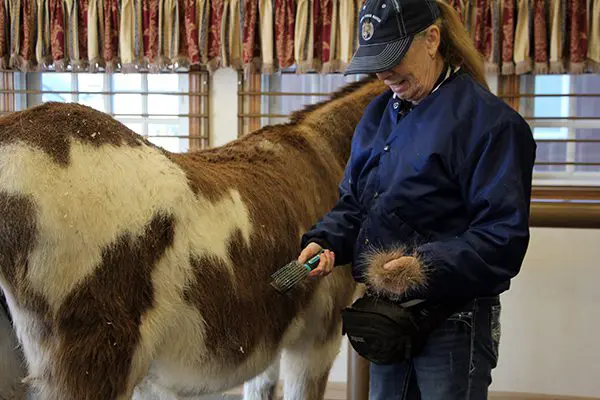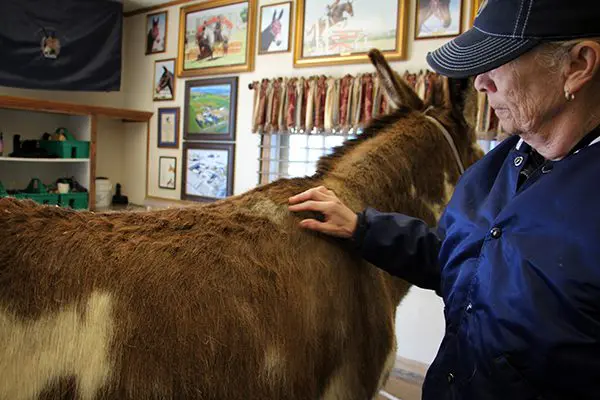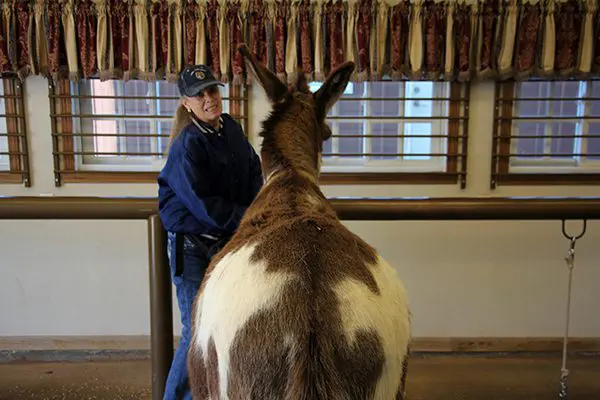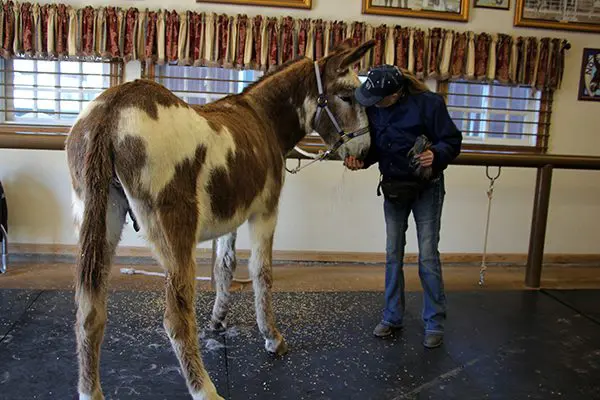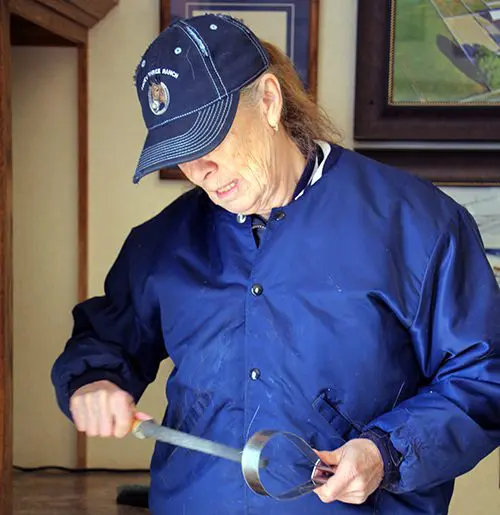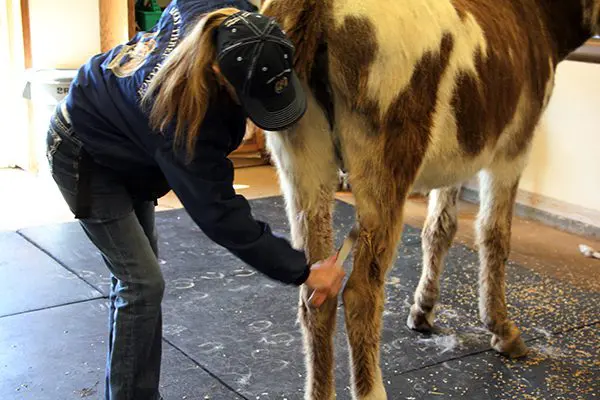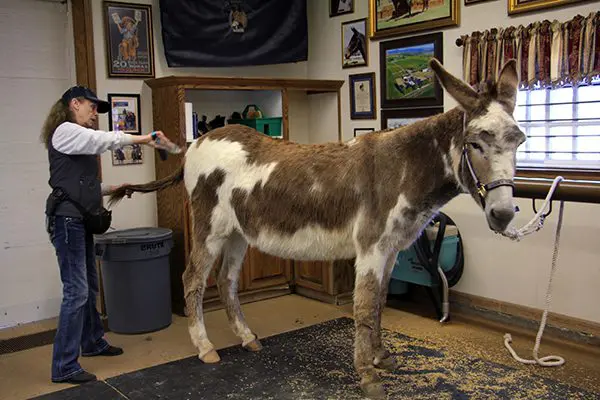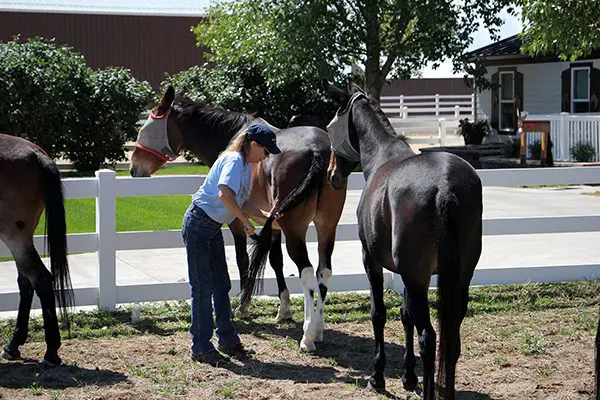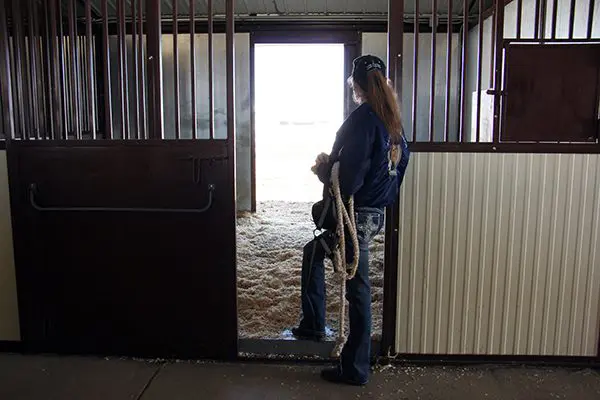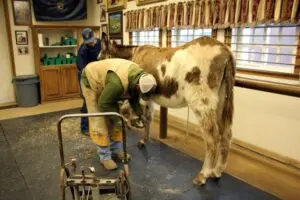5-5-20
Chasity was very stiff and compromised through her whole body when she first arrived. She was extremely rigid over the top line and could not flex from the poll at all, much less through her entire spine. The “Elbow Pull” self-correcting restraint and work in the Hourglass pattern has helped her to be more flexible in her head and neck, and has produced some flexion through her back. Now we are going to ask her to extend that flexion the whole length of her spine. She has been learning how to stay erect around turns while bending through her rib cage, and easily flexes her neck and back when squared up at the halt. These subtle actions have reshaped the body fat evenly over her body and reduced the size of her enlarged neck by 50% in just one month! Her posture is already greatly improved!


Chasity began by leaning on the “Elbow Pull” to keep her reasonable good equine posture. After a month of work, she is now able to sustain her own self-carriage a good part of the time. When she leans on the “Elbow Pull,” it is taut and when she is in self-carriage with good postural balance, it is loose. She started over the first pole and it was loose, then caught her balance on the second pole and it tightened…


On the third pole, she regained her balance and the “Elbow Pull” became loose again, but stepping over the last pole she allowed her balance to be too elongated and had to lean on it again.


As Chasity walked away, she again resumed her good equine balance and self-carriage and the “Elbow Pull” was loose again. We repeated the poles a little later in the Hourglass Pattern and she was then able to sustain her balance and self-carriage over the first pole…


…over the second and third poles, in good equine posture and not leaning on the “Elbow Pull”…


…and finished over the fourth pole with no loss of balance at all! As she is strengthened in good posture, her core muscles, ligaments and tendons will gain strength with symmetrical development and her time in self-carriage will increase. Ultimately, the “Elbow Pull” will remain loose at all times. She now walks in a rhythmic and cadenced fashion, matching every step that I take and halts easily upon request with no anxiety, or excess movement.


I asked her to square up and this time, instead of just flexing at the poll, I asked her to lower her head and stretch her entire spine from head to tail. Then we proceeded with more work in the Hourglass Pattern in the opposite direction and she practiced bending through her rib cage while staying erect around the corner cones.


Next, we negotiated the gate into the obstacles area, halted and squared up. I gave her a reward and asked her to stretch down again.


Chasity has been doing very well with breaking the bridge down into small steps. She halts easily, squares up and holds her balance in several new positions, with the front feet up, back feet down…


…with all four feet on the bridge and with front feet down and back feet up. She did very well at stretching her spine in all of these odd postions that added to her symmetrical core development.


Then she squared up again off the bridge and did one more deep stretch. Chasity was surprised to see the tarp where the tractor tire used to be and took exception to this “new” obstacle. The silly thing was that she side-passed the rail with her front feet on the tarp and her back feet in the sand. I thought, “Okay, now I know how to get her to side pass when I am ready! Silly Girl!” LOL!


We went back and tried again. She was hesitant, but realized what it was this time. I have to remember, Chasity has cataracts in both eyes and cannot see very well…trust is everything! There was no problem at all with the familiar smaller tires!


We reinforced her bending with the barrel exercises and practiced backing through the Back-Through “L.” She is still a bit “stuck” in reverse, but it will loosen up in time. She needs to learn to manipulate her body in a good postural balance and it is awkward for her now. It will just take patience and moving slowly. Speed will come with practice.


A nice deep spinal stretch relaxed and prepared her for the final obstacle! Chasity had been doing “Evasion Therapy” on me when I placed the tractor tire obstacle with too much open space around it. Boy, was she surprised to find out it was right there in front of her with no where to go but forward!


Chasity only put one foot inside the tire as she danced along the edge with her other three feet, so I opted to do it again the other way. This time, she put two feet into the center of the tractor tire… PROGRESS! Coming back through, she finally agreed to step through it with all four feet!


Finally, SUCCESS! My patience had paid off and our relationship was still intact! We finished with another REALLY DEEP stretch. Chasity’s flexibilty and elasticity were improving rapidly! Doing obstacles in confined spaces in the beginning promotes success and I am all about setting up your equine for SUCCESS!


